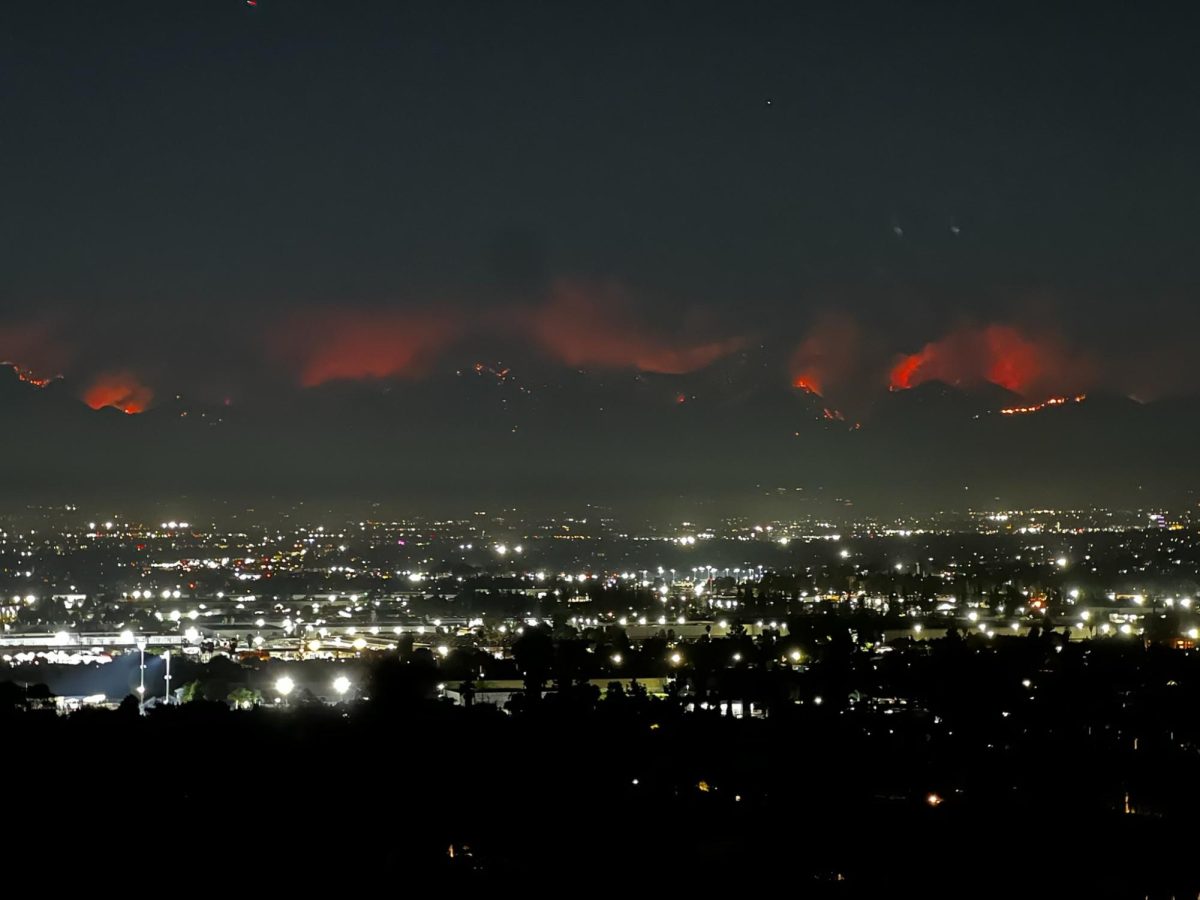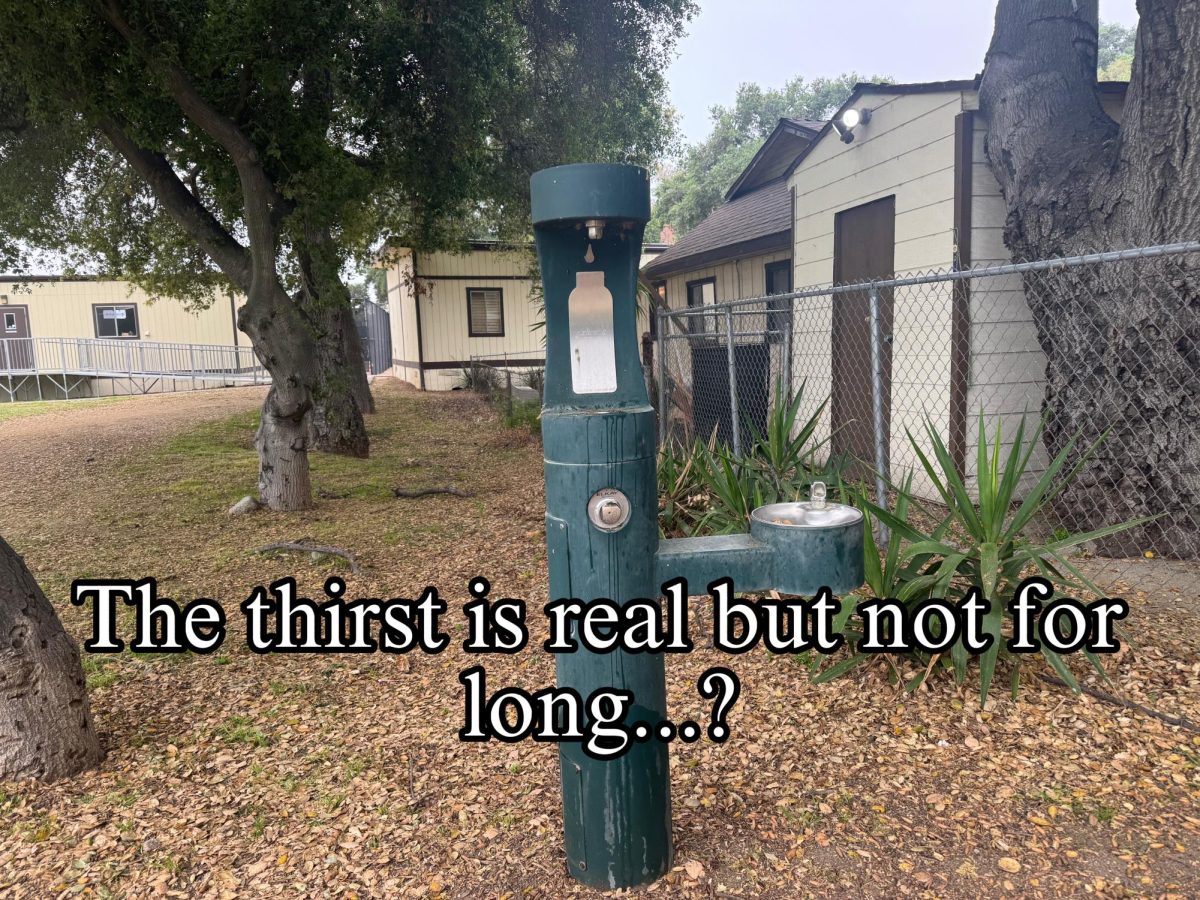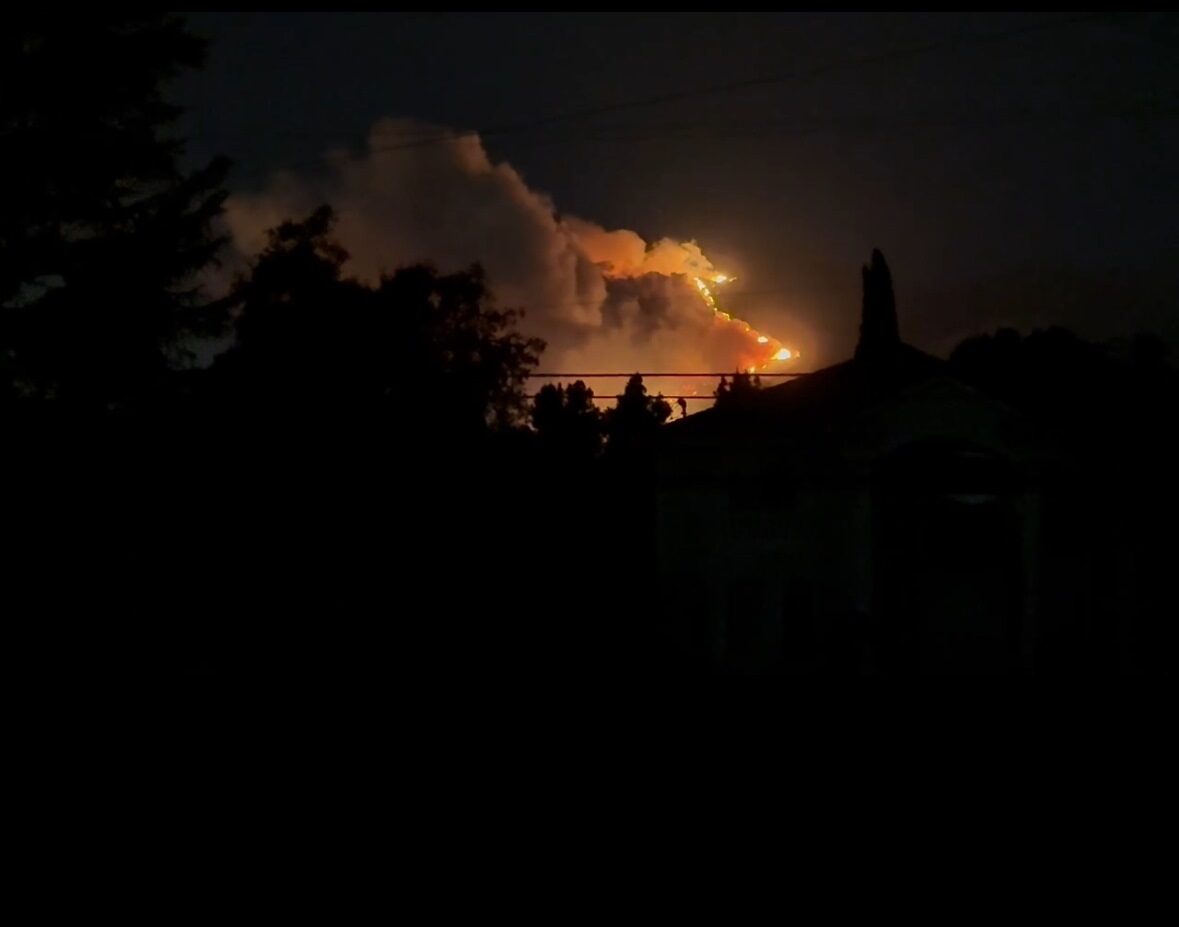Every now and then, you may find Webb students scrambling down to Chandler field for another evacuation drill, chatting it up with their classmates, while waiting to be dismissed. Although Webb takes careful precautions to ensure Webb students’ preparation for different disastrous events, many of us doubt that we will be in one of those situations, that is, until recent events.
On September 8th, a wildfire began near East Fork and Glendora Mountain roads on Camp Bonita Road, east of Camp Williams. Since then, it has grown exponentially to 54,795 acres as of September 18th, partially due to the heat wave, demolishing 66 structures, damaging 13 structures, and injuring four firefighters as it spreads into San Bernardino County.
The Glendora Bridge Fire rages as the current largest active fire in California; however, 25% has been contained, as local firefighters are fighting diligently to ensure the safety of nearby citizens
In preparation for an evacuation, boarders are expected to create an emergency “to-go bag”,at the beginning of the year with their Dorm Heads. These bags serve as a supply of necessary items in case of an emergency, where students are instructed to pack lightly and only include necessary items like an ID or a change of clothes.
“We will tell dorm students to put their passport or ID in there, and that’s all they’re supposed to take, no backpack no books, only necessities,” said Sarah Lantz, Dean of Students.
On the morning of Wednesday, September 11th, Webb students were shocked to hear that the Bridge fire had grown significantly, and the chance of an emergency evacuation was increasing. Many boarders bolted to pack their emergency “to go bags” – small drawstring bags that are given to all boarding students to use in the case of an evacuation – and wondered what would happen next.
In the event of a fire arising near campus, LA County’s Fire Department will inform Webb and mandate an evacuation mode.
There is a color system of green, yellow, and red in which these colors refer to zones that determine if individuals need to be ready for evacuations or will need to start evacuating.
The green zone informs individuals to get ready or pack belongings in case of evacuation; the yellow zone warns individuals to be alert of evacuation warnings and suggests those with pets, many family members, or with medical needs to evacuate early; and finally, the red zone mandates evacuation.
When some Webb families heard about the expanding fire, they became increasingly concerned about the situation.
“My dad was really worried about the air quality, so he requested that I spend a few nights at my day student friend’s house,” said Kristine Bisgaard (‘25).
However, Webb remained proactive and informed families that Webb’s campus was not in the evacuation zone.
In the case of an evacuation order placed by LA County’s Local Fire Department, faculty will conduct a full campus sweep, locating all students and gathering them on Chandler Field.
Every faculty member has a role in case of an emergency, such as receiving the correct information and making sure everyone is accounted for. While some people have individual jobs, others work in teams.
One team is required to sweep the entire campus, check faculty houses, and go door-to-door or key-in, to make sure everyone is safely out of their rooms. Another team gathers all the food and water needed for all the evacuating students and faculty, as it could take hours before creating a plan depending on the severity of the situation.
“We have teams that are responsible for getting food and water, like fresh food and water to make sure that… everyone has water and can be fed if we need to,” said Mr. Hoe (‘04); “And then we have folks who are their sole job is to contact local authorities to make sure we’re getting the proper information fed to us directly.
When Mr. Hoe was a student at Webb, he experienced a frightening emergency evacuation. In the fall of 2003, during his senior year at Webb, the Grand Prix Fire broke out dangerously close to campus. As the flames began to approach the new track field, an evacuation took place. Everyone was evacuated for a week and a half, resulting in a long period of time without school.
In case of an evacuation, Webb will guide everyone to a pre-determined local evacuation site which varies. From the evacuation site, deans and other members of faculty will begin contacting families and other guardians informing them of the situation, asking them to come and retrieve their student.
“In 2003, we did have an evacuation that was one or two nights over count. In those cases, we’re always just making sure that we have some place for everybody to stay,” said Melanie Bauman, Director of Wellness. “We would probably go to an evacuation site and then decide from there to determine how long are we going to be evacuated for”.
Students remaining at the evacuation site will be informed by the LA County Fire Department on the status of the evacuation order, for example, whether it is extended or over.
As the containment of the Bridge fire continues to progress and we move on from this evacuation scare on campus, it is crucial that we are all aware of the procedures Webb will continue to follow if a situation like this arises again.



















